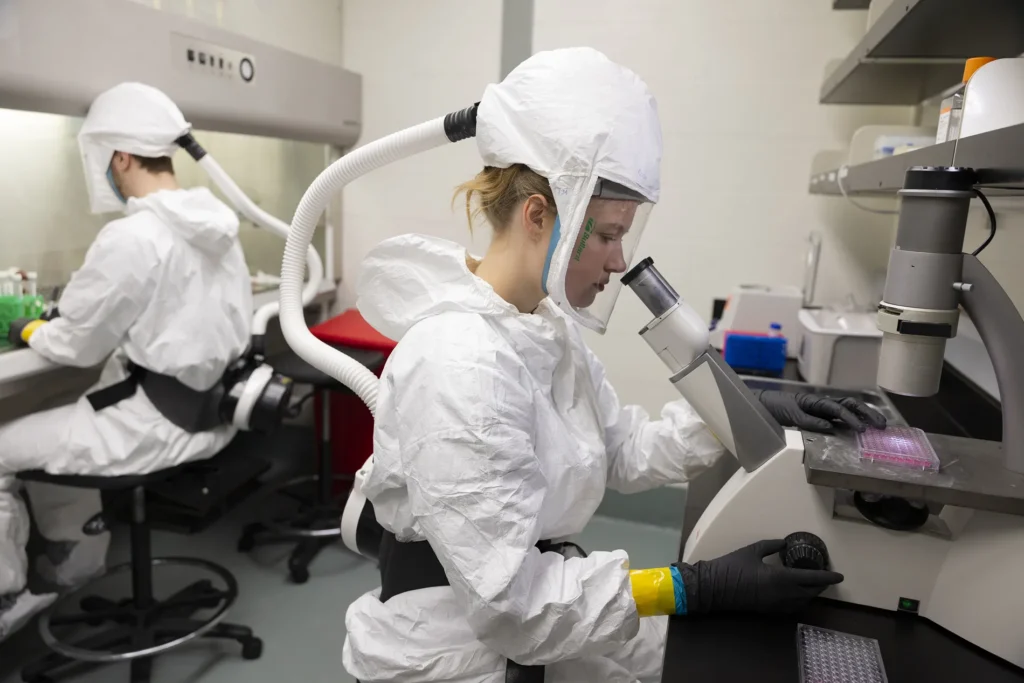SEE WHAT ELSE WE HAVE TO OFFER AT UGA.EDU
SEE WHAT ELSE WE HAVE TO OFFER AT UGA.EDU
First detected in domestic geese in Southern China in the mid-1990s, Highly Pathogenic Avian Influenza A (also known as H5N1) prompted worldwide concern when its rapid proliferation led to millions of deaths in wild birds and the culling of millions more poultry to quell the spread.
The virus has since evolved to infect more than 100 animal species, including bears, foxes, seals, and even a dolphin.
And, perhaps most concerningly, people.
“This virus is not going away,” said Nicole Nemeth, an associate professor in UGA’s College of Veterinary Medicine and head of the Southeastern Cooperative Wildlife Disease Study Diagnostic Service. “The risk to people is still low, but people need to be vigilant, particularly those who hunt or handle wild birds or poultry.”


Home to one of the nation’s six Centers of Excellence in Influenza Research and Response, UGA experts were quickly tapped by the Food and Drug Administration to help test U.S. dairy supplies for avian influenza.
Funded by the National Institute of Allergy and Infectious Diseases (CEIRR No. 202175N93021C00018), the UGA center focuses on the history, transmission, and progression of influenza nationwide.
Led by Tompkins, a renowned virologist and immunologist, UGA’s Center for Influenza Disease and Emergence Research is heading the university’s efforts to reduce the threat of avian influenza to both human and animal health.
UGA is one of only five institutions nationwide partnering with the FDA on these efforts.
“We have the potential of people becoming infected through consumption of unpasteurized milk, cheese or other dairy products. Those infections provide an opportunity for the virus to gain a foothold and spread between humans.”
– Mark Tompkins
There’s already been one recall of raw milk and cream due to bird flu contamination on a California dairy farm. And multiple raw pet food brands have issued recalls for their products after multiple cats and dogs were sickened or died after consuming contaminated products.
Although the risk to people currently remains low, UGA experts recommend steering away from consuming raw dairy and meat products—for both people and pets.
“I am really worried about the changing ecology of this virus and our ability to take the steps needed to address it before it becomes a much bigger problem than it already is,” Tompkins said.
Should the virus become a bigger threat to people, public officials already have a pandemic response plan in the works, Tompkins said. And, if needed, the U.S. should be able to quickly get a vaccine to market to help protect people.
“We do have effective measures to control this disease.”